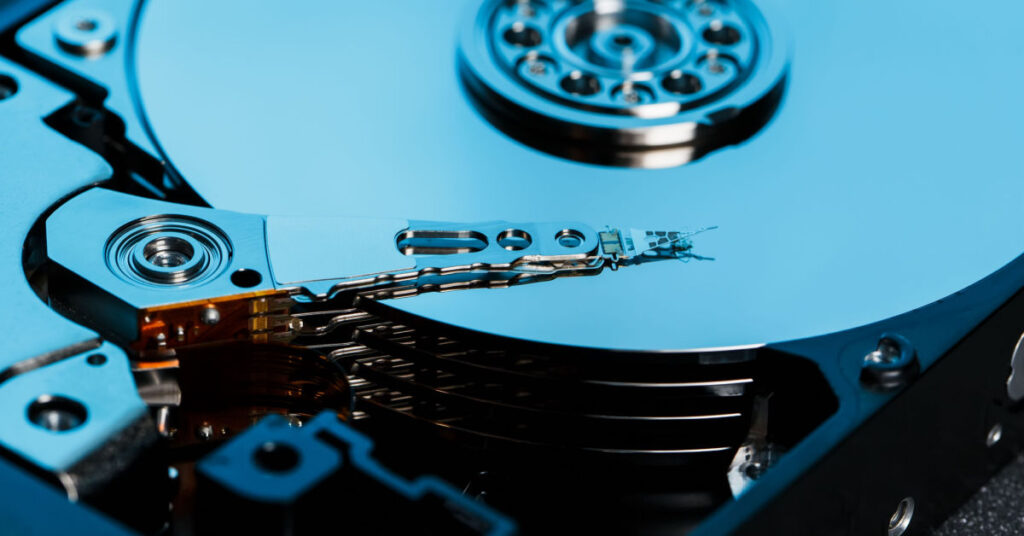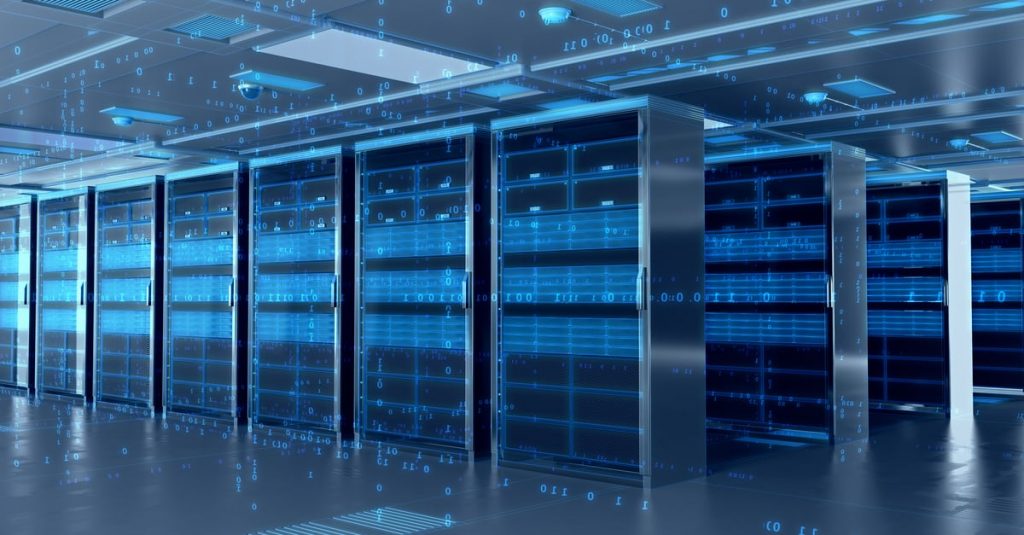After years of slow growth, HDD capacity is once again increasing rapidly. So how is shingled magnetic recording (SMR) helping drive this acceleration?
As the hard drive market picks back up from a two-year slump, manufacturers like Seagate, Western Digital, and Toshiba are pressing ahead with ambitious capacity roadmaps. With heat-assisted magnetic recording (HAMR) technology now delivering long-promised growth in areal density, the future of HDD looks bright. But HAMR isn’t the whole story: shingled magnetic recording (SMR) is a crucial component of many state-of-the-art drive designs.
While the drawbacks of SMR drives are well-known, especially as regards write speeds, shingled magnetic recording can help reduce total cost of ownership for the right use cases. Here’s a look at the impact of SMR drives in today’s global data center.
What is SMR (Shingled Magnetic Recording)?
Conventional PMR drives work by using a write head to flip bits on magnetic tracks. These tracks run side-by-side, with no overlap.
Diagram of PMR drive from Synology Knowledge Center
In SMR drives, new tracks overlap with parts of previously written tracks like shingles on a roof. This doesn’t affect read speeds, because the read head can simply read that part of the track which isn’t overlapped by any others.
In hard drives, the read head is smaller than the write head. Reads are typically performed by an “MR head.” First developed in the 90s, these heads use the magneto-resistant effect to reliably read small magnetic features. The upshot is that modern read heads are effective even when reading a narrow strip of the whole track.
This small difference in structure yields big differences in logic. When editing data, SMR drives, like SSDs, don’t immediately overwrite tracks. Instead, they write the new data on empty tracks, and discard the overwritten data later during the drive’s idle time.
Also like SSDs, SMR drives must perform sequential writes. For a hard drive, this means filling out whole bands, or “zones,” of tracks at once. The consequence is that that SMR can’t take advantage of the increased speed random writes allow.
Given these restrictions, SMR drives need system-level management in order to get the most out of them.
An SMR drive is drive-managed if the drive itself organizes whatever write tasks come from the host, usually by mimicking a traditional block storage device. A drive is host-managed if the data center uses special protocols to optimize drive performance. While drive-management enables compatibility with legacy host systems, host-management is preferable where possible, and is where innovation in SMR management at scale largely takes place.
Shingled Magnetic Recording: The Drawbacks
It’s no secret that SMR drives pose certain challenges. The biggest challenge is write speed.
A PMR drive will write somewhere between 80 and 160 MB/s. An SMR drive is less predictable一it can write quite quickly onto a clean drive, but if it has too many write tasks queued, or has insufficient idle time to reorganize or discard overwritten data, then write speeds can be significantly lower than 80MB/s.
This speed challenge has other consequences. The idle time required reduces the time the drive can attend to other tasks. When it comes to use cases, SMR drives are less flexible, working far better at writing data in bulk than performing non-sequential operations which involve editing multiple smaller files.
Finally, although solid data is hard to come by, anecdotally SMR drives have encountered performance issues when plugged into existing RAID arrays.
Shingled Magnetic Recording: The Upsides
While SMR drives have some limitations, they come with real upsides.
Reduction in total cost of ownership is perhaps the most obvious benefit of SMR drives. SMR drives can increase storage density up to 30% (in some cases) while keeping costs low. For hyperscalers looking for high-capacity drives by the pallet, SMR drives give you more for less.
Getting the most out of SMR drives requires some planning, in order to ensure the best standards for drive management and backup. These adjustments cost money. At the same time, denser storage helps reduce the cost of setting up and cooling extra racks of drives. Over the long term it may even reduce the need to invest in new data centers or sources of energy.
Speaking of power consumption, denser storage means you can raise capacity without increasing your data center’s energy footprint. In an era of increased public pressure for data centers to improve energy efficiency, that matters.
Just ask storage service Dropbox, which transitioned to SMR drives back in 2018. Five years later, 90% of HDD fleet consists of SMR drives. It estimates that it has increased capacity by 10-20% at no extra cost, while reducing physical footprint. Their power footprint for idle and random read workloads was slashed in half when they first adopted 14TB SMR drives, and their latest drives consume only .3 watts/TB idle and .5 watts/TB for random reads.
Speed also becomes less of an issue for certain use cases, since SMR drives work well for tasks involving sequential writes. Examples include cloud storage, archival tasks, and storing IoT data such as surveillance footage. SMR drives are particularly good for infrequently accessed storage, where write speed isn’t the most important factor. Some are even used to farm chia cryptocurrency.
Finally, SMR drives are becoming a crucial part of HDD designers’ road to higher capacity drives. Since high-capacity SMR drives typically hit the channel faster than PMR drives of the same capacity, using SMR drives gives a chance to get an edge on competition in the race to ramp up storage volume.
HDD Manufacturers Push SMR
While HAMR technology plays a huge role in increasing areal density, SMR remains a central part of plans to increase capacity, and features prominently in the recent roadmaps of the Big Three HDD manufacturers.
Seagate used SMR to give its Exos X24 drive a capacity boost, letting the firm ship 28TB SMR drives to select hyperscalers. Toshiba has demonstrated 32TB and 31TB SMR drives which also use HAMR and microwave-assisted magnetic recording (MAMR) respectively.

RELATED READING
Take a look at the tech which will enable the Big Three to hit the 50TB milestone.
SMR is even more central to Western Digital’s roadmap. In 2022, WD released a new drive, the 26TB DC H670 UltraSMR drive. As the name suggests, this new drive uses UltraSMR, a new variation on SMR which adds large block encoding and error detection algorithms in order to increase the number of tracks-per-inch on the disk. The firm has also used SMR to create the 32TB HC690 out of the 28TB HC680.
Western Digital believes that SMR will be increasingly relevant in the years ahead, as SMR adoption continues to grow. “We are seeing strong momentum for Western Digital’s SMR HDDs”, said IDC research director Ed Burns in a press release. “Western Digital is once again proving that hard drives are not just keeping pace: they are forging a path forward.”
“Our major customers remain committed to adopting SMR drives as the 20% capacity gain that UltraSMR drives over CMR offers multi-generation TCO benefits to the most complex data centers worldwide.”
WD CEO David Goeckeler
Shingled HAMR?
With conventional drives, SMR gives a ~20% capacity increase compared to non-SMR versions. However, analyst Chris Mellor at Blocks & Files believes that when comparing SMR HAMR to non-SMR HAMR, the increase is closer to 6.66%. He bases this on the fact that Seagate’s 32TB Exos SMR HAMR is only a 2TB increase from the non-SMR version. Mellor conjectures that HAMR drives, being denser, just don’t have as much space to overlap, since the write tracks are already narrower.
When asked by Mellor, Seagate’s Jason Zimmerman agreed that SMR may have diminishing returns as areal density increases, but was quick to point out that track density itself, rather than HAMR specifically, was the culprit. In any case, Zimmerman suggested the capacity gains between SMR HAMR and non-SMR HAMR in Seagate’s Mosaic 3+ platform were more like 10%.

Related Reading
HDD is now officially in its HAMR era, with the technology playing an increasingly prominent role in role in driving capacity increases.
Since shingled HAMR is still fairly new, it’s probably too soon to say whether diminishing returns on capacity are a robust trend and whether there’s a way to get around it. In the meantime, SMR is still giving a decent capacity boost.
Zoned Storage
It’s one thing to say SMR needs careful host management, and another to spell out what this means. Enter zoned storage.
Both SSDs and SMR drives use sequential writes, with chunks of data written on zones that must be written and erased as one.
In an SMR drive, tracks generally overlap. However, they don’t always overlap: you can have gaps between different “zones” of shingled tracks.
The zoned nature of SMR drives mean that it can benefit from standards which take this into account. Such standards spell out a set of commands, such as OPEN/CLOSE/FINISH ZONE, and REPORT ZONE. In a data center using zoned devices, it’s these standards which make it possible to manage writing and editing in a systematic way, rather than leaving management of zones entirely to the individual drives in which they figure.
Just which standard is in play depends on the interface. For SCSI, the standard is Zoned Block Command (ZBC), and for ATA, it’s Zoned Device ATA Command Set (ZAC). SSD also benefits from zoned treatment: Zoned Namespaces (ZNS) is the relevant standard for NVMe SSDs.
Zoned storage has a number of benefits. For SMR drives, zoned storage improves performance, optimizes space utilization, and manages complexity in large-scale storage systems. For SSD, it also cuts down on the need for overprovisioning and minimizes garbage collection cycles.

RELATED READING
Zoned Storage is just one factor shaping future data centers. Things are moving fast, with NVMe for HDD underway, and AI-driven storage right around the corner.
Zoned standards are crucial for the scalability of data centers making use of zoned devices. Implementing them can be tricky, however, as it requires updated software and operating systems. In order to speed up the adoption of zoned storage, WD’s Zoned Storage Initiative aims to foster an open-source community which makes such upgrades easier to perform.
The Outlook for SMR
It’s true SMR drives require careful treatment in order to avoid latency issues. But that care pays off. SMR enables denser storage, which allows companies to ramp up their capacity while keeping cost increases low. Plus, SMR drives are improving all the time一with appropriate host-management and judicious selection of use cases, even the write speeds become less of an issue.
Low cost has always been a major factor in keeping HDD the backbone of hyperscale data centers. With even lower costs, it’s unsurprising businesses are increasingly finding SMR drives an attractive option.
Learn how Horizon Technology can help you get more out of your data center drives while lowering total cost of ownership (TCO).











